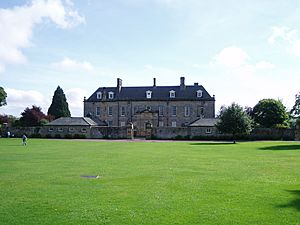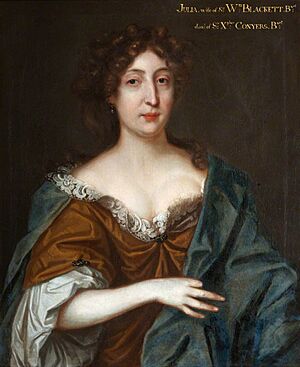Sir William Blackett, 1st Baronet, of Newcastle-upon-Tyne facts for kids
Sir William Blackett, 1st Baronet (born June 14, 1657 – died December 1705) was an important landowner and politician. He served in the House of Commons, which is like the main law-making body in Britain, during three different times between 1685 and 1705.
Contents
Early Life and Family Connections
William Blackett was the third son of another important person, Sir William Blackett, and his mother was Elizabeth Kirkly. When his father passed away in 1680, young William inherited a large amount of money.
Following in his father's footsteps, he became the Mayor of Newcastle-upon-Tyne in 1683. This was a very important job in the city.
A Career in Public Service
In 1685, William Blackett became a Member of Parliament (MP) for Newcastle-upon-Tyne. An MP is someone elected to represent their area in the House of Commons.
In the same year, a special title called the Baronetcy of Newcastle was created just for him. His older brother, Edward, had already inherited their father's similar title.
Sir William also served as the High Sheriff of Northumberland in 1688. This role involved keeping law and order in the county.
He lost his MP seat in Newcastle in 1690 but was re-elected in 1695. He lost it again in 1700, but once more, he was chosen by the people in 1705. People thought he was a very honest and proper man. He was also known as a great speaker in the House of Commons.
Land and Business Ventures
In 1689, Sir William bought large parts of the Allendale estate from a nobleman named Sir John Fenwick, 3rd Baronet, who was not doing well financially.
In Allendale, Sir William greatly expanded the mining of lead and coal. These were very valuable resources at the time.
He also bought Wallington Hall in Cambo, Northumberland, from Sir John Fenwick. Sir William then rebuilt much of this grand house. He used Wallington more as a place for hunting and outdoor activities. The main family home stayed in Newcastle until 1783.
Family Life
Sir William Blackett married Julia Conyers in 1684. She was the daughter of Sir Christopher Conyers, 2nd Baronet. Sir William was succeeded by their son, also named William, who took over his title and responsibilities.



